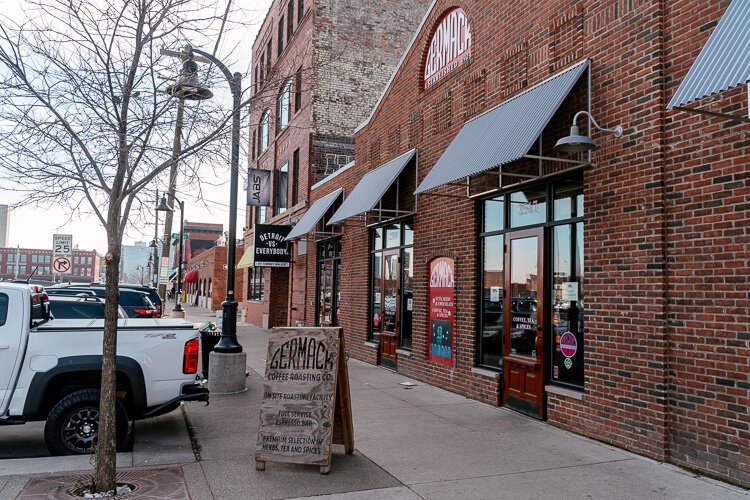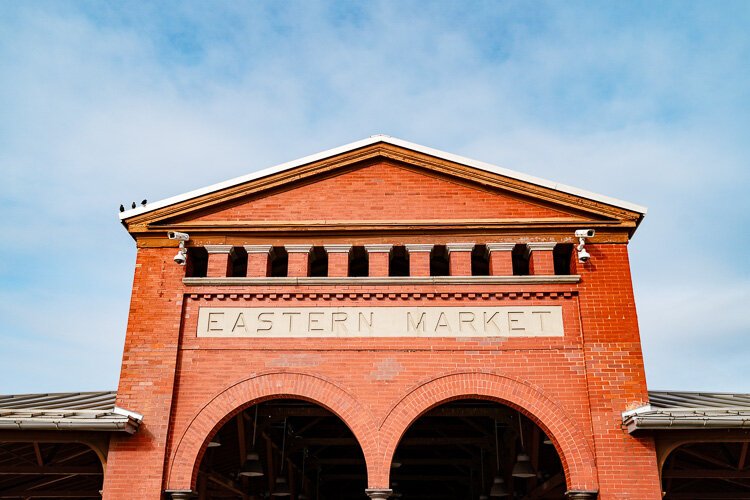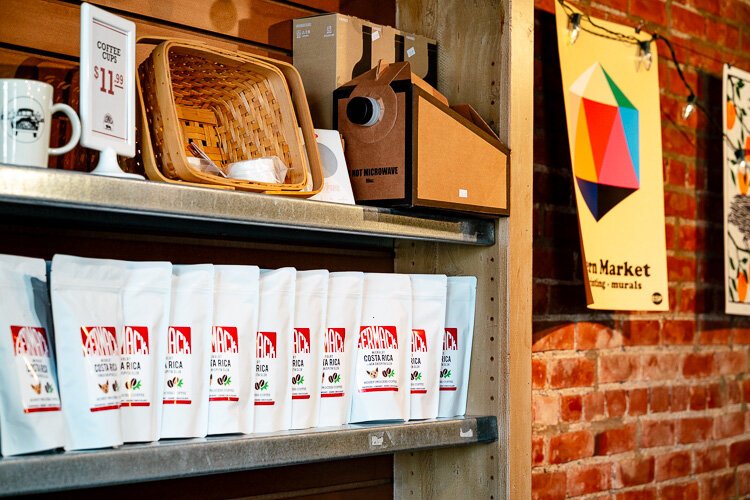Partner Partner Content Amid booming development, how will Eastern Market keep its food identity?
As Detroit — and, more specifically, its greater downtown — has seen its biggest wave of development in decades, the question presents itself: How does Eastern Market keep its food identity while still providing relatively affordable points of entry for area entrepreneurs, all the while real estate developers purchase buildings and announce plans for new mixed-use developments?
Chicago’s Fulton Market. Manhattan’s Meatpacking District. These were historic centers of local food industry for major American cities, since refashioned as “vibrant mixed-use” neighborhoods replete with fancy restaurants, boutique retail storefronts, and upscale lofts and hotels. The food industry that established them became a memory — a marketing tool used to brand neighborhoods and sell real estate.
Cynical, perhaps, but those cities provide valuable points of reference when considering the ever-changing market forces circling one of Detroit’s very own crown jewels, Eastern Market.
Unlike other cities, Detroit has been able to retain its own center of food production for well over a century. For all the changes the city has experienced these past several decades, Eastern Market has kept both its historic charm as well as its status as a working food hub. But as Detroit — and, more specifically, its greater downtown — has seen its biggest wave of development in decades, the question presents itself: How does Eastern Market keep its food identity while still providing relatively affordable points of entry for area entrepreneurs, all the while real estate developers purchase buildings and announce plans for new mixed-use developments?
The relatively recent wave of development in and around the district presents a new set of challenges for both the tenants and the market itself. Spurred by the booming development in nearby Midtown and downtown, the city’s framework plan — released in November — was created as a road map for the market to keep its identity into the future.
The plan highlights three overall goals:
Create jobs for Detroiters
Improve the quality of life for residents
Keep the authenticity and function of Eastern Market
“Achieving these goals both protects the character of the existing market district and prepares the neighborhood for the future,” the plan says.
Within a couple of years from the conclusion of the framework study, projects will be implemented on multiple fronts, including a zoning update for the existing market district and expansion area, the issue of design standards and guidelines for new development, and pedestrian-friendly improvements to a part of Riopelle Street, according to the report.
“The framework plan creates an excellent road map to expand Eastern Market into areas with large amounts of vacant land to allow Eastern Market to keep established food businesses in the heart of the city as well as identifying key regulatory measures intended to sustain the character of the historic core of the market district,” says Dan Carmody, president of the Eastern Market Partnership, the nonprofit organization that manages the market on behalf of the City of Detroit.
Eastern Market Partnership, the City of Detroit, and Detroit Economic Growth Corporation have been taking many other steps to keep food at the heart of Eastern Market from working with existing food processors to expand in the expansion area of the market district and to harness the investment wave to ensure core values of the historic district are retained.
“In a sense, Eastern Market has been able to retain its character while other markets haven’t because of 60 years of commercial real estate failure in Detroit,” Carmody says.
“In 2015, we developed the Eastern Market 2025 Strategy where we laid out how to survive the good times, and not just the bad times.” While it may seem a paradox, surviving the good times is one of the main goals of the market these days.
To do that, Eastern Market has taken a proactive approach toward its future. The 2025 Strategy Carmody identifies three core values that define Eastern Market as a district, and not just a collection of historic buildings.
Eastern Market is about food — not just restaurants, but the gritty side of making and distributing it.
Eastern Market is about providing an inexpensive way for people to enter the food economy, be it as a vendor through its Saturday markets or by way of its small business incubators.
And finally, Eastern Market should remain a place that is welcome to everyone. Visit the market on a Saturday, says Carmody, and you can see the face of the region.
It’s an important list, critical to maintaining the diversity that is Eastern Market.
To leverage its review its ability to review and recommend projects during the regulatory and incentive processes conducted by public agencies, Eastern Market Partnership developed a set of Real Estate Development Protocols, along with a scoring system to provide developers with a set of expectations about how food-related and mixed-use projects can contribute to the preservation of these key goals.
“Working with developers as they begin to plan their projects is intended to be a bookend to the community benefits agreement process established by the City a few years ago that more typically comes in the final stages of project approval. We think the protocols will lead to projects that better help us preserve our key goals,” Carmody says.

“Eastern Market is a place to go on Saturday mornings with a great cross-section of southeastern Michigan, where everyone comes together. We love being part of it. But not without our great community of wholesalers. There are a lot of things people that only come on Saturdays don’t see,” says Frank Germack, co-owner of the Germack Pistachio Company.
“There’s a benefit to being part of this community. We share ideas. A lot of the equipment is the same. We can give advice and referrals.
“We rely a lot on our Eastern Market partnerships.”
The Germack Pistachio Company has called Eastern Market home since its founding in 1924. The company is one of many food producers, wholesalers, and distributors here, owning both a manufacturing facility and retail storefront in the district. The company, like many others, finds value in being part of a cluster of food businesses.
Identifying ways in which Eastern Market can keep its food businesses while acknowledging new residents, non-food businesses, and developments is key to its future, says Carmody.
The Neighborhood Framework Plan released by the City of Detroit and its Planning and Development Department addresses this key issue. The market’s historical and cultural significance are major factors in attracting and retaining local businesses, but the businesses can’t grow with the current facilities. The plan identifies the neighborhoods north and northeast of the traditional market district as areas for growth.
The market looks to Wolverine Packing Co. as an example. The company opened a 180,000-square-foot storage and packing facility north of the market. By expanding its boundaries, the market kept Wolverine from moving elsewhere while also preventing the demolition of any historic buildings that could serve for other useful purposes.
“We can incubate smaller businesses in the older buildings. The large businesses need newer buildings and the framework plan helps identify both kinds of space,” Carmody says.
“Businesses, especially small and medium sized-ones benefit from their proximity to each other.”
It’s often the older buildings that house the next generation of Eastern Market businesses. Set back a block from the busy market, a three-story brick building on Division Street features tenants that include clothing brand Detroit Hustles Harder, letterpress printshop Signal-Return, and the music, comics, and book shop 37th Street Shield Library.
“For the long-term benefit of the market, we need a diversity of businesses but also open businesses, and not just empty buildings with landlords waiting for the right tenant with the right rent,” Germack says.
“Vacant storefronts don’t help us.”

One of the market’s newest tenants is Fauna Holistic, a massage spa that opened a third-floor studio this past summer. In searching for a home for her massage parlor, owner Fiona Maier says she knew that she wanted to open in Eastern Market.
Maier, for one, is excited about the developments happening around the market. She doesn’t seem too worried about the future of the district. More development means more customers, she says.
“It feels like we’re building toward something, it keeps getting better and better,” Maier says.
“My business will benefit greatly from an influx of new businesses coming in.”
Whether it’s the confirmed University of Michigan development a few blocks down Gratiot or new mixed-use buildings planned for the district, Eastern Market’s Carmody believes that there can be room for both food and non-food businesses alike but it will require careful attention to the business mix of the district and provide commercial space at a variety of prices.
It’s a problem that the market hasn’t really had to worry about before, he says. Carmody pegs current the rent range anywhere from $7-$18 per square foot, saying that rent wouldn’t become prohibitive until it reaches $25 to $30 per square foot.
Another key strength of the Eastern Market District is that it’s a patchwork of private owners, each with their own motivations rather than a place dominated by a handful of developers.
Equitable development strategist Lauren Hood commends the Eastern Market Partnership for putting together their Development Protocols, though she wonders if it has any teeth. For all the talk about equity and inclusivity, be it here or elsewhere in the city, who or what is in place to hold developers accountable, she asks.

“My question is always about implementation. What’s the body holding developers accountable,” says Hood.
“This seems to be a good first step but it needs to have enforcement behind it.”
What Eastern Market is experiencing right now is relatively new, at least in respect to the last several decades. Consider the outcry generated earlier this year when Russell Street Deli clashed with new landlord FIRM Real Estate group. The deli opted to leave rather than pay the $50,000 the landlord wanted to repair the old floor.
The outcry is a good sign that so many people care about what happens to the market. It shows that everyday people are as much stakeholders in Eastern Market as anyone.
Perhaps it will be the people themselves, the residents nearby, the local shop owners, and the countless visitors, that will play just as much a role in preserving the character of Eastern Market.
This story is the second of a four-part mini-series supported by Eastern Market.







